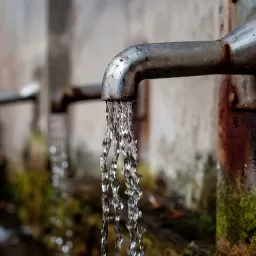
Boiler Water Treatment in Palm Oil Mills
Having eight years of experience working with biomass-fired boilers in palm oil mills, I can say that boiler water treatment in palm oil mills is a challenging task if compared with industrial boilers. Unlike industrial boilers which rely heavily on condensate return and industrial water for boiler feed water makeup, the source of raw water for boiler feed water in palm oil mills comes from lake, river, or well. Relatively not much condensate can be recovered in palm oil mills due to the high amount of unrecoverable sterilizer condensate and the application of live steam in some of the process heating. In palm oil mills, low cycle of concentration is not uncommon which indicates more chemicals are wasted through blowdowns.
The raw water from natural resources is high in impurities, turbidity, dissolved gases, and mineral content. Sometimes algae, mud and oil could be present and silica is particularly a problem in water from lakes, and this scenario complicates treatment further. Lack or inadequate water treatment is dangerous as it may cause scaling and corrosion which affect the reliability, efficiency, and safe operation of the boiler.
In general, boiler water treatment consists of external and internal water treatment. External water treatment refers to conditioning boiler feedwater by removing impurities, hardness, oil, oxygen, dissolved and suspended solids, outside the boiler and usually accomplished by mechanical means such as continuous clarifier, pressure sand filter, water softener, and deaerator. Because it is not possible to obtain a perfect boiler feed water by external water treatment, an internal water treatment, which mainly by chemical means, shall be employed. All boiler engineers must be aware that the external treatment of boiler feedwater must be emphasized since more chemical addition in the boiler is undesirable.
In industrial boilers, the removal of turbidity and suspended matters is already done by the municipal water treatment system. This is however a different story in palm oil mills. The external treatment for boiler makeup (feedwater) consists of pH adjustment, coagulation, flocculation, sedimentation, filtration, water softening, and finally, deaeration. Soda ash is added if the pH of the water is low. Soda ash acts as pH adjustment because coagulant functions at pH ranges over 5.5 to 8.0. The coagulation chemicals are dosed into the inlet pipe leading to the bottom of a continuous water clarifier. Coagulation and flocculation are the basic steps in boiler water treatment to reduce turbidity, organic substances, and color of raw water. Coagulation neutralizing the negative charges on colloid surfaces, allowing the particles to agglomerate to form floc, which is slow settling. The most common coagulants are aluminum sulfate (alum), sodium aluminate, and polyaluminum chloride (PAC). Synthetic polymers called polyelectrolites have been developed for coagulation process. Flocculation is further agglomeration of slowly-settling coagulated particles into large rapidly-settling floc with the addition flocculant such as organic polymer (starch) or synthetic polymer such as polyacrylamide (PAM) to attach and bridge between particles to form larger agglomerates.
From the natural resources, the water is pumped by booster pumps into the continuous clarifier to allow flocs to settle down. The water rises with decreasing velocity and the resultant floc forms a sludge blanket at the upper part of the conical section. The clarifier is blowdown periodically to remove the heavy sludge, which settled at the bottom while clear water is transported to a clear water tank before passing through a pressure sand filter where solids escaped from the clarifier and fine particles are filtered and removed. Normally, the sand filter removes fine particles up to 10 μm. Sand filters normally contain sands and gravels, 100% anthracite, or combination of sand, anthracite, and gravel. Sufficient water reservoir is maintained in the overhead tank and if the level of water in the tank becomes low, the operation of boilers could be affected. In water softener, sodium zeolite ion-exchange process is used to remove hardness. The function of a softener is to remove water hardness (calcium and magnesium) using ion exchange process. Normally sodium zeolite is used and a softener would contain 30~36″ of synthetic ion exchange resin. For example, calcium bicarbonate, Ca(HCO3)2 dissolves in water and split up to Ca2+ and (HCO3)-. In ion-exchange process, Ca2+ is removed by replacing sodium ion using resin ion-exchange bed which is covered with Na+ ions. Here in palm oil mills, the softeners are prone to bio and iron fouling. Soft water is then pumped into the deaerator for deaeration. The pressurized deaerator operates by allowing steam into the feed water through a pressure control valve to maintain the desired operating pressure, and hence temperature at a minimum of 105°C. The steam raises the water temperature causing the release of O2 and CO2 gases that are then vented from the system. This type can reduce the oxygen content to 0.005 ppm. The water produced is oxygen-free therefore oxygen corrosion in the boiler can be avoided.
The internal treatment involves the addition of reactant chemicals such as sulfite, sodium phosphate, chelates, polymers, and caustic, which each has different function in treating boiler water. To prevent oxygen corrosion, the chemical known as oxygen scavenger is added. The common oxygen scavengers are sulfite, hydrazine, and DEHA. Hydrazine however should be avoided because it is carcinogenic.. Phosphate prevents scaling by precipitating calcium as calcium triphosphate or hydroxylaptite, which can be removed via blowdown.
water plant
#Boiler #Water #Treatment #Palm #Oil #Mills
Will be pleased to have you visit my pages on social networking .
Facebook page here.
Twitter account is here.
Linkedin account here
Post byBedewy for info askme VISIT GAHZLY




